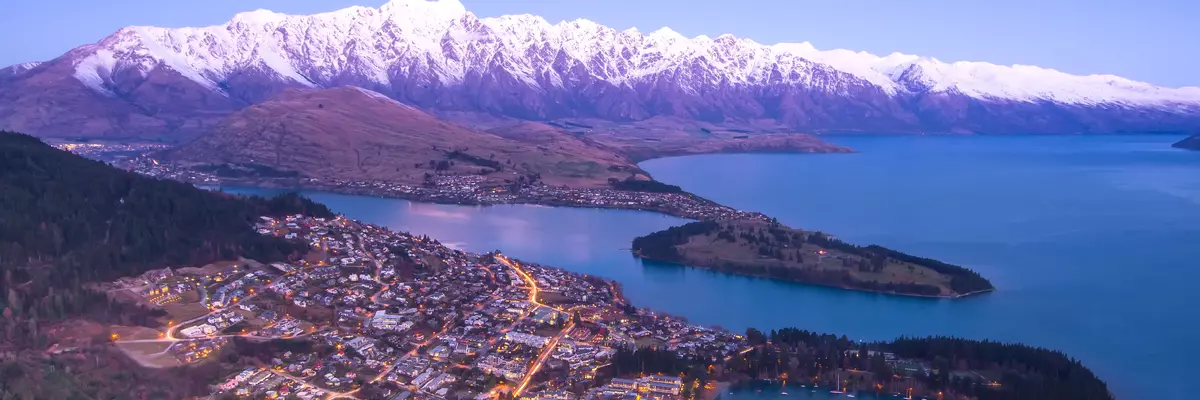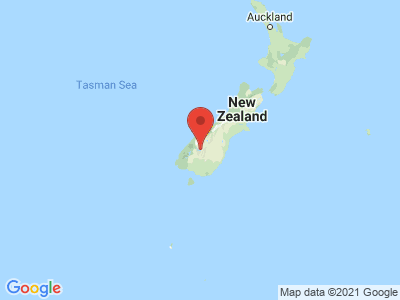Climate Table Queenstown
Jan | Feb | Mar | Apr | May | Jun | Jul | Aug | Sep | Oct | Nov | Dec | |
|---|---|---|---|---|---|---|---|---|---|---|---|---|
| Max. Temperature | 24° | 23° | 22° | 17° | 15° | 15° | 11° | 11° | 14° | 16° | 19° | 21° |
| Min. Temperature | 8° | 8° | 7° | 4° | 1° | -1° | -2° | -1° | 1° | 4° | 5° | 7° |
| Sun Hours | 6 | 6 | 5 | 4 | 3 | 2 | 3 | 4 | 4 | 5 | 5 | 5 |
| Rain Days | 8 | 7 | 8 | 10 | 12 | 13 | 15 | 16 | 13 | 13 | 11 | 10 |
The climate year of Queenstown
Queenstown has a distinctly mild climate by New Zealand standards. The continental climate produces comparatively warm summers and mild winters - with regard to the pleasant climate Queenstown is an exception in the climatically rather unstable New Zealand. This phenomenon can be explained by the location of the city of about 10,000 inhabitants. The city is located directly at the foot of the New Zealand Alps (also known as the Southern Alps). The mountain range has average altitudes above 1500 meters, the highest mountain being Mount Cook at 3724 meters. The mountains shield the city optimally from the otherwise prevailing "Roaring Forties", which are the strong, cooling westerly winds. By the way, these winds are also responsible for the extremely capricious weather changes in New Zealand. Queenstown is picturesquely situated on the 291 km² Lake Wakatipu, the third largest inland lake in New Zealand.
General information about Queenstown
Both Lake Wakatipu and the impressive mountain range "The Remarkables" repeatedly served director Peter Jackson for his film series "The Lord of the Rings" as an imposing backdrop. The fascinating landscape can be wonderfully explored on one of the numerous hiking trails such as Queenstown Hill Time Walk or the Ben Lomond Walkway. Queenstown and the lake are also a stop on the 610-kilometer Southern Scenic Route. This tourist road runs along the coast past numerous landmarks and other attractions. The area around the lake is known above all as a mecca for extreme sports enthusiasts, especially bungee jumping (spectacular: from the Kawarau Bridge), rafting or paragliding are popular here. Queenstown is also becoming increasingly important as a winter sports center. In the comparatively small downtown of the former gold mining town there are many cafes and bars where you can relax after your strenuous tours and tell about your adventures.
Tourism Queenstown
Between May and September it is quite cool in Queenstown, especially in the winter months of July and August the thermometer reaches highest 11 °C on the scale. At night, temperatures may well slip into the minus range. The sun shines about three to four hours per day, but it rains about 13 to 15 days per month. The best winter sports conditions are found between June and September. It is much warmer between December and March, when the thermometer shows an average of 21 °C and the sun shines for about seven to eight hours a day. In the New Zealand summer, in the months of January and February, it can even get as warm as 24 °C. Optimal conditions for various outdoor activities!


